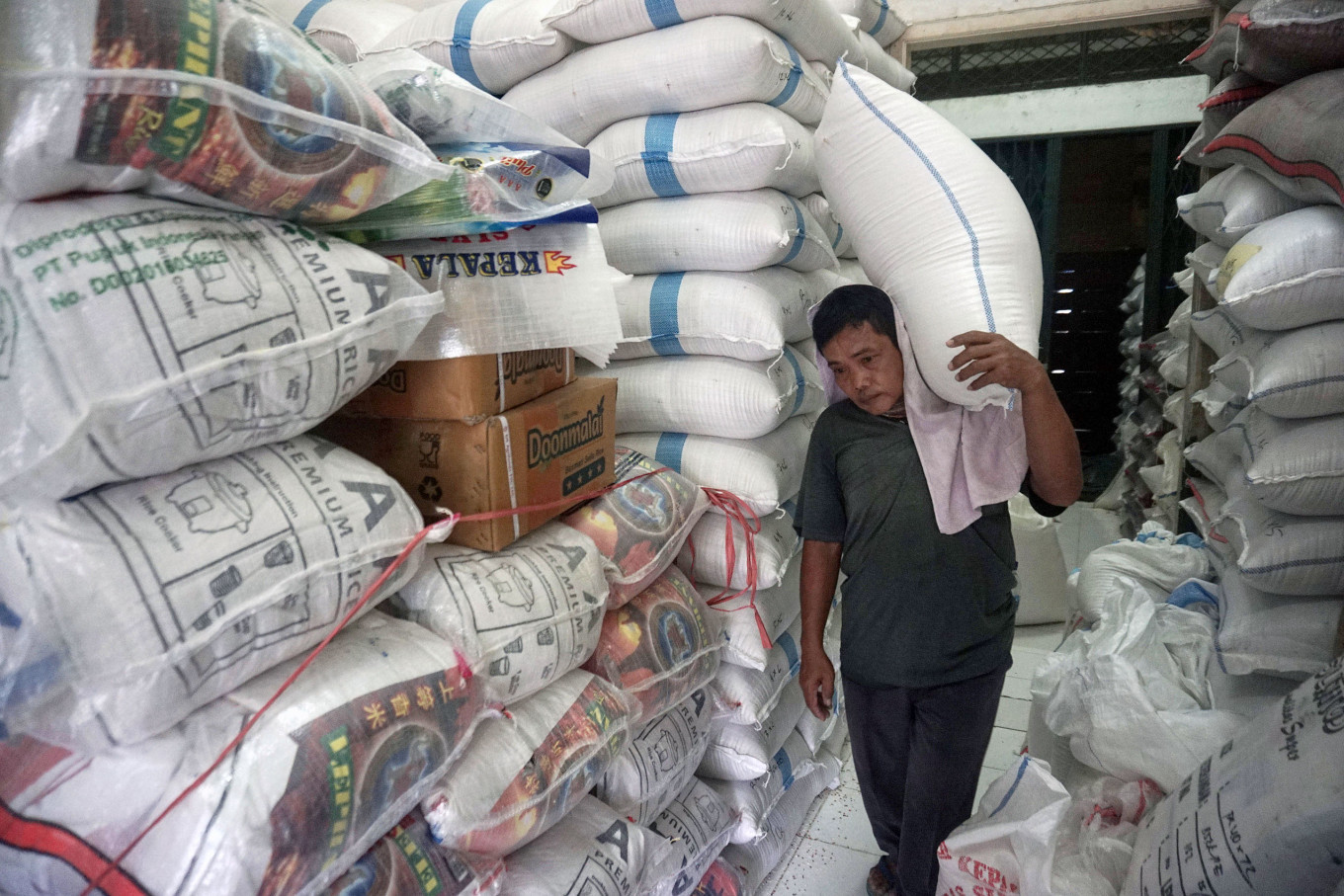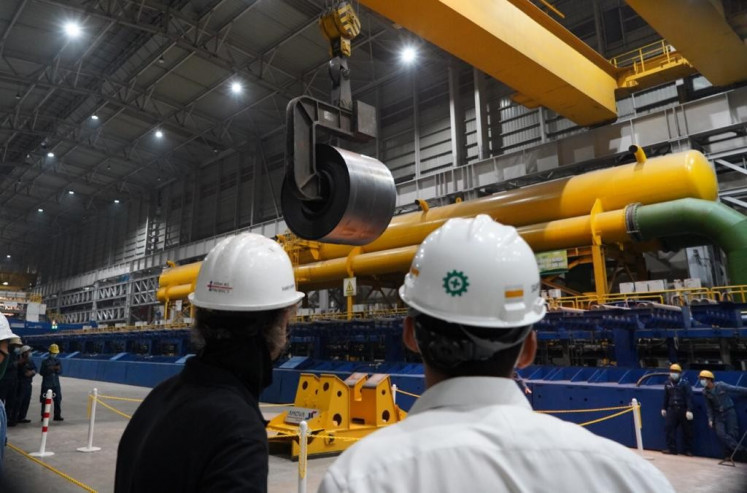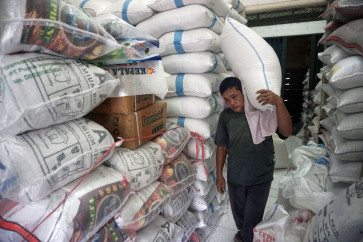Popular Reads
Top Results
Can't find what you're looking for?
View all search resultsPopular Reads
Top Results
Can't find what you're looking for?
View all search resultsAnalysis: Govt ‘flood the market’ strategy insufficient to curb rice prices
Change text size
Gift Premium Articles
to Anyone
 Workers transport rice at Cipinang Rice Main Market, Jakarta, Monday (15/3/2021). Main Director of Perum Bulog Budi Waseso said that the government rice reserve stock (CBP) will reach above 1 million tonnes by the end of April 2021, an increase from the position per March 14, 2021 of 859,877 tonnes due to entering the main harvest season in March-April 2021. ( (JP/Yulianto Catur Nugroho/wen)
Workers transport rice at Cipinang Rice Main Market, Jakarta, Monday (15/3/2021). Main Director of Perum Bulog Budi Waseso said that the government rice reserve stock (CBP) will reach above 1 million tonnes by the end of April 2021, an increase from the position per March 14, 2021 of 859,877 tonnes due to entering the main harvest season in March-April 2021. ( (JP/Yulianto Catur Nugroho/wen)
T
he government, in an attempt to rein in rising rice prices, has employed various instruments such as social assistance (Bansos) programs and market operations to flood the market with rice from the national reserves. However, rice prices have skyrocketed above initial projections made several months ago when the plan was drafted. As of Sept. 12, average retail prices of rice reached Rp 12,740 (US$83 cents)/kilogram and Rp 14,390/kg for medium rice and premium rice, respectively. Market experts now estimate that the government needs to disburse several times more rice than what has been allocated.
The most recent Bansos program was to disburse 10 kg of rice to roughly 21,353 households from September to November through social assistance (Bansos) programs. This would equal expending 213,530 tonnes of rice from the national reserves every month for a total of 640,590 tonnes over the three months.
Based on the calculations from the Institute for Demographic and Poverty Studies (IDEAS), an injection of 12.5 to 19 percent of the market demand for rice is necessary to stifle rising rice prices. Meanwhile, the 640,590 tonnes of rice provided through the three months of Bansos programs is equivalent to only roughly 8 percent of market demand. This means that the Bansos programs would have needed to supply between 1 million and 1.5 million tonnes of rice to stop the increase in rice prices.
Furthermore, another reason why the Bansos programs alone are not enough to curb the rising rice prices is that there is a supply scarcity at the retail level. The Market Vendors Association (APPSI) has reported that traders are struggling to source rice from mills, private suppliers and the State Logistics Agency’s (Bulog) bulk rice. This scarcity of rice is illustrated by data from the Cipinang Central Rice Market (PIBC), which shows that, as of last week on Sept. 6, the total stock of rice in the markets only reached 25,800 tonnes, which is far below the 30,000 tonnes estimate for secure stock levels.
In the case of Bulog’s bulk rice, Bulog president director Budi Waseso recently explained that bulk rice is missing from the PIBC because Bulog changed the market operations disbursement scheme for rice. Previously, market operations were carried out in the form of bulk rice delivered to the PIBC to be bought by traders. Now, Bulog distributes bulk rice directly to retail outlets, both modern markets and traditional markets, in the form of pre-packaged bulk rice. This change was done as a response to oligopolistic practices by market players that kept prices high during market operations at the start of the year.
On the other hand, traders at the PIBC responded to this change with criticism. They argued that they are not capable of lowering the retail price of their rice without the bulk rice from Bulog. For them, the new market operations fail to solve the scarcity in rice supply.
Furthermore, there are still more externalities that continue to hike rice prices. El Nino, which began last month, is projected to cause a long drought that will negatively impact rice harvests for the period from September to December. Based on estimates from Statistics Indonesia (BPS), rice production during the period of El Nino will reduce by around 5 percent, further exacerbating the low market supply.


















